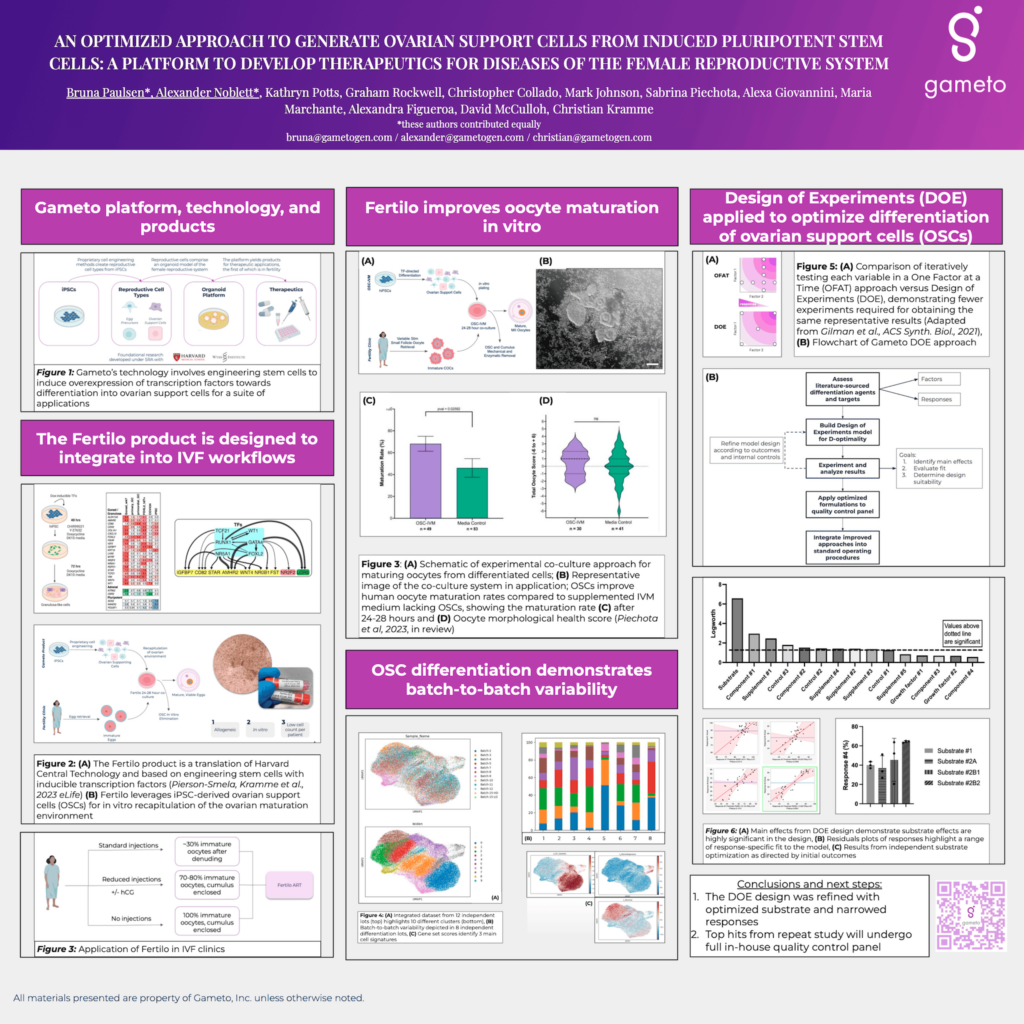An in vitro model of the human ovary would advance our understanding of female sexual development and reproduction, enabling development of novel fertility treatments such as robust oocyte in vitro maturation technology. A crucial functional component of such a model are ovarian support cells (OSCs), including granulosa, theca and stromal lineages. Together, OSCs are responsible for shaping the ovarian signaling and oocyte growth
environment throughout development and adult life. Recently, our group reported an efficient 5 day protocol to generate FOXL2+ OSCs from human induced pluripotent stem cells (hiPSCs) through transcription factor (TF) over expression. Resultant differentiated cells have transcriptomes resembling human in vivo OSCs and recapitulate key ovarian phenotypes in vitro, including follicle formation and steroidogenesis. As the induced OSCs are a heterogeneous cell population, differentiation outcomes, while high, exhibit significant variability (75.4 ± 23.3% FOXL2+ cells) and scRNA-seq analysis indicates that cell subpopulation composition varies across production batches. Aiming to increase reproducibility and ensure translatability to clinical settings, we applied design of experiments (DOE) to further optimize multiple factors known to be associated with intermediate mesoderm induction and OSC differentiation along with our standard TF overexpression. We assessed cell viability and FOXL2, AMHR2 and CD82 expression as indicators of successful OSC differentiation. We demonstrated that optimized conditions determined by DOE result in less variability in OSC induction than our previous differentiation protocol. The improvements in the differentiation process combined with quality by design approaches allow for reduced manufacturing costs and improve compliance with cGMP regulations. Further investigation will establish whether specific optimized conditions and associated OSC characteristics would give a more robust clinical outcome in assisted reproductive technologies applications. Generation of a robust and consistent protocol to produce OSCs for oocyte in vitro maturation applications have the potential to widen access to IVF and egg freezing, as well as reduce the duration and hormonal burden to which women are subject during these processes.
June 1, 2023
An optimized approach to generate ovarian support cells from induced pluripotent stem cells: a platform to develop therapeutics for diseases of the female reproductive system

